Thanks to Jim Reisert AD1C and Alan Jubb 5B4AHJ for their continuous research and help, WAP has just issued a new Reference to the US Ellsworth Mountains Camp referred to the activity of KC4USW.
First of all, Ellsworth Mountains Camp (WAP USA-NEW) has not to be confused with Ellsworth Station (WAP USA-31) and Ellsworth Base (WAP ARG-14)
KC4USW was QRV from McMurdo Station, Ross Island (WAP USA-22), in 1957 before moving to Ellsworth Mountains Camp, from where he was QRV until February 1959. CQ May 1959 gives the last day of operation from Ellsworth Station as 1959,Febr.1st (letter from W8LIO).
 MARIST Archives & Special Collections has available a recording of an interview with Antarctic explorer Captain Finn Ronne from amateur radio station KC4USW, Weddel Sea, Antarctica, dated 1957, Nov.11.
MARIST Archives & Special Collections has available a recording of an interview with Antarctic explorer Captain Finn Ronne from amateur radio station KC4USW, Weddel Sea, Antarctica, dated 1957, Nov.11.
For sure, QSL of that date (pic on the Left) is a genuine one for Ellsworth Mountains Camp at 79°07’00” South, 85°39’00” West, on Ellswort Mountains, Weddell Sea area (The Weddell Sea is part of the Southern Ocean and contains the Weddell Gyre. Its land boundaries are defined by the bay formed from the coasts of Coats Land and the Antarctic Peninsula. The easternmost point is Cape Norway at Princess Martha Coast, Queen Maud Land. To the east of Cape Norway is the King Haakon VII Sea. Much of the southern part of the sea is covered by a permanent, massive Ice Shelf field, the Filchner Ronne Ice Shelf).
Ellsworth station, the one we know after 1957-1959, was another entity built later , that’s why KC4USW has been used when QRV from Ellsworth Station in 1979-80, and why CQ January 1996 reports KC4USW as QRV from Ellsworth. 1979-80 QSL (tnx ND4V): Note that the 1979/80 QSL shown in Club Log says “Ellsworth Mts (Mountains)”. (See pic on the Right here below)
A bit of history
 (Ellsworth Mountains Camp mistakenly called Ellsworth Station) was built by US Navy Seabees under the command of Capt. Finn Ronne with the support of the Icebreackers USS Staten Island and USS Wyandot.
(Ellsworth Mountains Camp mistakenly called Ellsworth Station) was built by US Navy Seabees under the command of Capt. Finn Ronne with the support of the Icebreackers USS Staten Island and USS Wyandot.
The originally planned site for the station was Cape Adams, but when the terrain proved impractical due to huge ice cliffs, an alternate location on Gould Bay was selected, on the western coast of the Wededell Sea over the Filchner Ice Shelf, and close to the Argentinean Belgrano I Base (WAP ARG-Ø5).
Part of the scheduled agenda for the IGY, Ellsworth Station was commissioned on 11 February 1957 and less than two years later, on 17 January 1959, was handed over to the Argentinean Antarctic Institute. Along with the handover, the United States government gave all the buildings, facilities, and existing food supplies while Argentina provided the logistical and administrative services necessary for the continued operation of the station. It was agreed that scientists of both countries would work together at the place in technical studies and scientific research.
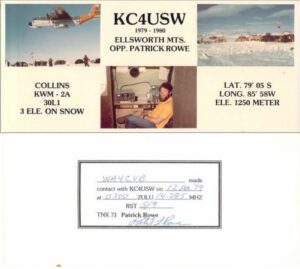 Feasibility of the station came into question when structural problems caused by the unstable ice had the base half-sunken during most of the spring. To protect personnel and equipment, Ellsworth Mountains Camp (mistakenly called Ellsworth Base) was closed and all of its staff and equipment were evacuated on 30 December 1962, during the 1962–63 Antarctic summer campaign. It continued to be inspected periodically by Argentinean exploration teams: it was eventually covered by snow and ice. The Filchner Shelf sector where it was located as split off a giant iceberg, and then it drifted through the Southern Ocean, where the base’s remains have been lost at sea.
Feasibility of the station came into question when structural problems caused by the unstable ice had the base half-sunken during most of the spring. To protect personnel and equipment, Ellsworth Mountains Camp (mistakenly called Ellsworth Base) was closed and all of its staff and equipment were evacuated on 30 December 1962, during the 1962–63 Antarctic summer campaign. It continued to be inspected periodically by Argentinean exploration teams: it was eventually covered by snow and ice. The Filchner Shelf sector where it was located as split off a giant iceberg, and then it drifted through the Southern Ocean, where the base’s remains have been lost at sea.
So, it looks like the Ellsworth Station (WAP-USA-31) and Ellsworth Base (WAP ARG-14) both at 77° 39’ S, 41° 05’ W were the same one. The 1st, the one managed by US, the 2nd managed by LU when it was turned over to Argentina.
Ellsworth Mountain Camp (WAP-USA-NEW) was located at 79°07’S, 85°39’W and it was in activity only from 1957 through 1959.
The ones reported active from 1979-80 and 1996 are referred to Ellsworth Station 77° 39’ S, 41° 05’ W, so, 2 different locations which may confuse a bit.
Following the KC4USW QSL dated 1957, WAP is issuing WAP USA-46 reference to Ellsworth Mountain Camp, 79°07’S, 85°39’W on Ellswort Mountains, Weddell Sea area
TNX Jim AD1C and Alan 5B4AHJ. Note and info on KC4USW have been updated the in Club Log at: https://clublog.org/test.php?call=KC4USW
 The Antarctic Treaty System (ATS) was entered into force in 1961. So this year it’s the 60th Anniversary.
The Antarctic Treaty System (ATS) was entered into force in 1961. So this year it’s the 60th Anniversary. 
 MARIST Archives & Special Collections has available a recording of an interview with Antarctic explorer Captain Finn Ronne from amateur radio station KC4USW, Weddel Sea, Antarctica, dated 1957, Nov.11.
MARIST Archives & Special Collections has available a recording of an interview with Antarctic explorer Captain Finn Ronne from amateur radio station KC4USW, Weddel Sea, Antarctica, dated 1957, Nov.11. (Ellsworth Mountains Camp mistakenly called Ellsworth Station) was built by US Navy Seabees under the command of Capt. Finn Ronne with the support of the Icebreackers USS Staten Island and USS Wyandot.
(Ellsworth Mountains Camp mistakenly called Ellsworth Station) was built by US Navy Seabees under the command of Capt. Finn Ronne with the support of the Icebreackers USS Staten Island and USS Wyandot. Feasibility of the station came into question when structural problems caused by the unstable ice had the base half-sunken during most of the spring. To protect personnel and equipment, Ellsworth Mountains Camp (mistakenly called Ellsworth Base) was closed and all of its staff and equipment were evacuated on 30 December 1962, during the 1962–63 Antarctic summer campaign. It continued to be inspected periodically by Argentinean exploration teams: it was eventually covered by snow and ice. The Filchner Shelf sector where it was located as split off a giant iceberg, and then it drifted through the Southern Ocean, where the base’s remains have been lost at sea.
Feasibility of the station came into question when structural problems caused by the unstable ice had the base half-sunken during most of the spring. To protect personnel and equipment, Ellsworth Mountains Camp (mistakenly called Ellsworth Base) was closed and all of its staff and equipment were evacuated on 30 December 1962, during the 1962–63 Antarctic summer campaign. It continued to be inspected periodically by Argentinean exploration teams: it was eventually covered by snow and ice. The Filchner Shelf sector where it was located as split off a giant iceberg, and then it drifted through the Southern Ocean, where the base’s remains have been lost at sea.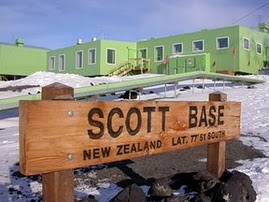 A budget plan includes $344 million New Zealand dollars (US $247 million) to rebuild Scott Base
A budget plan includes $344 million New Zealand dollars (US $247 million) to rebuild Scott Base 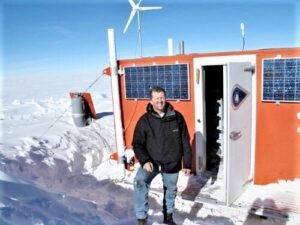 Sad to recently learn that Andy Stillinger (WA2DKJ/KC4) died suddenly of natural causes this pass February 23, 2021
Sad to recently learn that Andy Stillinger (WA2DKJ/KC4) died suddenly of natural causes this pass February 23, 2021 the end of January in Antarctica operating from McMurdo Station (KC4USV)
the end of January in Antarctica operating from McMurdo Station (KC4USV) 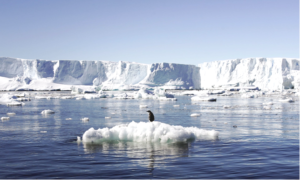 Scientists from Te Herenga Waka—Victoria University of Wellington’s Te Puna Pātiotio—Antarctic Research Centre (ARC) have contributed to a major international study that has found sea level rise from melting glaciers and ice sheets could be halved this century if the Paris Agreement target of limiting warming to 15°C is met.
Scientists from Te Herenga Waka—Victoria University of Wellington’s Te Puna Pātiotio—Antarctic Research Centre (ARC) have contributed to a major international study that has found sea level rise from melting glaciers and ice sheets could be halved this century if the Paris Agreement target of limiting warming to 15°C is met. Station “P” was a British base camp at the head of Mateev Cove on the east side of Hannah Point, 62°39’16”South, 60°36’48” West on Livingston Island in the South Shetland Islands, Antarctica that supported survey, geology and biology field work, from 29 December 1957 until 15 March 1958. It was a temporary, mobile camp for use by field parties on Livingston Island. It has not been the practice to assign letters to field camps, so the letter “P” was used as the intention had been to erect a Hut. RRS Shackleton was holed when transporting the Hut, parts of which were used to repair the ship.
Station “P” was a British base camp at the head of Mateev Cove on the east side of Hannah Point, 62°39’16”South, 60°36’48” West on Livingston Island in the South Shetland Islands, Antarctica that supported survey, geology and biology field work, from 29 December 1957 until 15 March 1958. It was a temporary, mobile camp for use by field parties on Livingston Island. It has not been the practice to assign letters to field camps, so the letter “P” was used as the intention had been to erect a Hut. RRS Shackleton was holed when transporting the Hut, parts of which were used to repair the ship.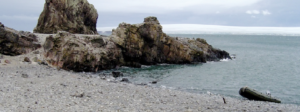
 The Antarctic Treaty System is the whole complex of arrangements made for the purpose of regulating relations among states in the Antarctic. At its heart is the Antarctic Treaty itself. The original Parties to the Treaty were the 12 nations active in the Antarctic during the International Geophysical Year of 1957-58.
The Antarctic Treaty System is the whole complex of arrangements made for the purpose of regulating relations among states in the Antarctic. At its heart is the Antarctic Treaty itself. The original Parties to the Treaty were the 12 nations active in the Antarctic during the International Geophysical Year of 1957-58.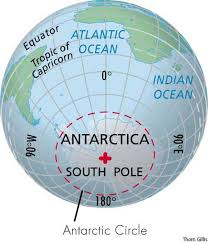 Research led by the University of Kent’s School of Physical Sciences has found new evidence of a low-altitude meteoritic touchdown event reaching the Antarctic ice sheet 430,000 years ago.
Research led by the University of Kent’s School of Physical Sciences has found new evidence of a low-altitude meteoritic touchdown event reaching the Antarctic ice sheet 430,000 years ago.
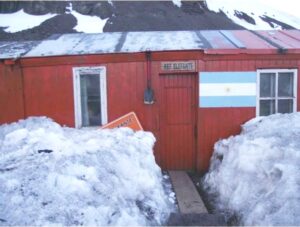 Rifugio Elefante is an Antarctic refuge located in the ice-free area at the foot of Fourcade glacier (62° 15’ 18″ South, 58° 37′ 56″ West) is located about 1000 mts from Punta Stranger,on the Potter peninsula of King George Island.
Rifugio Elefante is an Antarctic refuge located in the ice-free area at the foot of Fourcade glacier (62° 15’ 18″ South, 58° 37′ 56″ West) is located about 1000 mts from Punta Stranger,on the Potter peninsula of King George Island.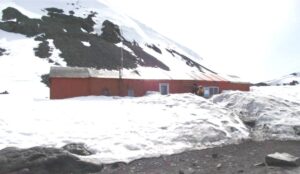 stepped on the Antarctic, did install on the site, an autonomous system that would provide energy to the “Elephant Refuge” located 2.6 km northwest of Carlini Base (WAP ARG-2Ø) of the Argentine Antarctic Institute.
stepped on the Antarctic, did install on the site, an autonomous system that would provide energy to the “Elephant Refuge” located 2.6 km northwest of Carlini Base (WAP ARG-2Ø) of the Argentine Antarctic Institute.